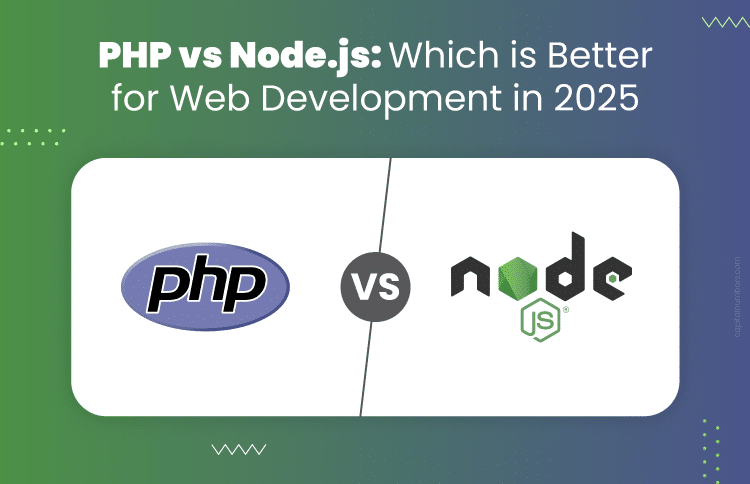Top 7 Reasons to Choose React.js for Building Interactive User Interfaces
Table of Contents
In the dynamic world of web development, creating engaging and responsive user interfaces (UI) is vital to delivering an exceptional user experience. And to achieve this, developers often turn to powerful libraries and frameworks to simplify the process and enhance the end product. One such tool that has gained immense popularity in recent years is React.js.
As of 2023, React.js stands proudly as the second most used web framework, securing its position as a preferred choice for creating dynamic and captivating user interfaces (UIs). Business owners are hiring React.js developers to enhance their websites or build them from scratch. But why React.js has captured the attention and trust of developers and business owners worldwide? Let’s find out.
What is React.js?
React.js is an open-source JavaScript library for designing fast, scalable, interactive, and intuitive user interfaces. It is an attractive and user-friendly choice for developing websites and applications. Also, it allows developers to express their creativity more freely.
What Are the Key Features of React.js?
The key features of React.js include the following:
• Simplicity
React uses JSX file that makes it easier to run the application. Being a component-based framework, React is simple to use and learn, as it allows code reuse when required.
• Components
In React.js, components are like building blocks for web interfaces. They are self-contained, reusable UI pieces that can be easily composed together. Also, they help you maintain the code when working on large-scale projects.
• Performance
Web apps developed using React.js work faster than those developed using other front-end frameworks. This is because of the virtual DOM system. It efficiently updates only the necessary parts of a webpage rather than the whole page when required. It leads to smoother and faster performance.
Why Use React.js for Developing Interactive User Interfaces?
There’re various reasons for using React.js for building interactive UIs. Let’s discuss this in detail –
1. Virtual DOM for Fast Updates
React’s Virtual DOM (Document Object Model) ensures efficiency. Unlike the traditional DOM, which updates the entire page when changes occur, React’s Virtual DOM enables required updates. So, when data changes, React creates a virtual representation of the DOM and compares it with the previous version.
Later, it updates only the elements that need changing. This process reduces actual DOM manipulations. And the result is faster rendering and a more responsive user experience.
2. Component-Based Architecture for Reusability
React’s component-based architecture is powerful for building modular and reusable UI elements. With this, developers can break down their applications into small pieces and reuse them across different application parts. Also, they can build, test, and manipulate each application as per their needs.
This approach enhances collaboration among teams. Also, it accelerates development cycles and ensures consistent design patterns. Reusable components allow for efficient development. Moreover, it simplifies maintenance and updates. Ultimately, it leads to more consistent and polished user interfaces.
3. Declarative Syntax for Readability
React’s declarative syntax lets developers describe the desired UI state and let React handle the rendering. React.js developers should use the ideal fusion of HTML and JavaScript syntax when developing a React application.
This approach eliminates the need for manual DOM manipulation. And it results in cleaner and more readable code. Developers can focus on describing what the UI should look like in different states. Thus, they can make it easier to understand and maintain codebases.
4. Unidirectional Data Flow for Predictable Updates
React follows a unidirectional data flow. It enhances UI predictability and stability by ensuring that the UI accurately reflects the underlying data. Data in a React application flows in a single direction – from parent to child components. So, minor changes or defects in the “child” structure do not impact the “parent” code.
The separation between data and UI interactions reduces the risk of unexpected behavior and bugs. Developers can confidently update the data knowing that the UI elements will update accordingly. Also, users can interact with the UI without altering the underlying data unintentionally.
5. Rich Ecosystem for Intricate User Interfaces
React.js’ ecosystem provides pre-built UI component libraries, such as Material-UI, Ant Design, Semantic UI, etc. React.js libraries offer reusable UI elements like buttons, modals, navigation bars, and more. Also, React.js’ ecosystem offers state management libraries like Redux and MobX. It remains UI consistent, responsive, and maintainable to ensure a smoother user experience.
Additionally, React.js’ ecosystem provides libraries like React Router to simplify routing and navigation. Tools like styled components and CSS-in-JS libraries help encapsulate styles within individual components. It makes the UI more modular and maintainable.
6. Robust Community for Strong Support
The React.js community comprises expert developers, designers, and enthusiasts with a common interest in UI development. Through forums, online communities, and social media groups, members exchange valuable insights, innovative techniques, and best practices to enhance their skills and create engaging and user-friendly interfaces. Creating a polished UI requires critical evaluation.
The React.js community offers opportunities for peer review and constructive feedback. User interface trends and development practices evolve rapidly. React.js developers can stay current with the latest developments through the community’s continuous discussions and sharing of industry insights.
7. SEO Friendliness for User-centric UI
React.js’ SEO-friendly features, including Server-Side Rendering, optimized page load speed, meta tag and title management, and mobile responsiveness, greatly impact user interfaces. All these lead to better page performance, enhanced user experience, and increased discoverability through search engines.
By prioritizing SEO-friendly practices, React.js developers can elevate their website’s visibility. Also, they can contribute to a seamless, engaging, and user-centric UI that resonates with modern web users.
You may also read: Let’s Compare: React JS vs Angular JS vs Vue JS
Final Thoughts
In an era where user engagement is key, React.js stands out as a crucial tool for building interactive user interfaces. Its Virtual DOM optimization, component-based architecture, declarative syntax, etc., make it the preferred choice for developers seeking to create engaging, dynamic, and responsive web applications. By harnessing React’s power, developers can elevate their projects, offering users seamless experiences.
Do you want to create interactive and engaging user interfaces? Opt for Capital Numbers for React.js development services. We are an award-winning software solutions company offering cutting-edge design and development services at affordable prices.
Eager to discuss your requirements? Contact us today!














